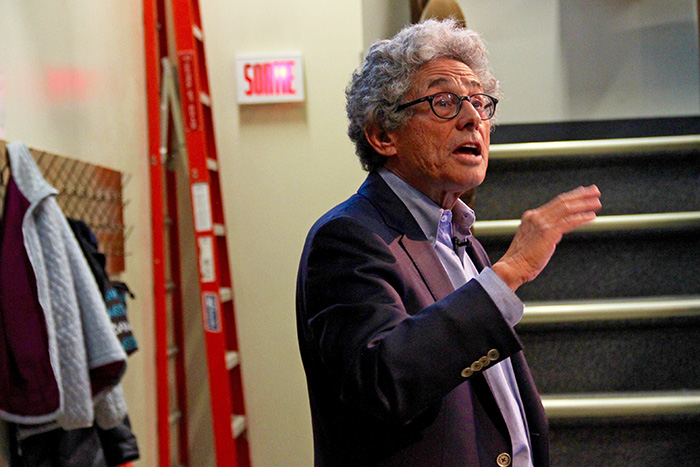“What do we think is beautiful? How do our brains interpret what we perceive?” Physiology Professor Dr. Leon Glass asked the audience.
His presentation, as part of the Cutting Edge Lectures in Science hosted by the Redpath Museum, discussed how chaos and fractals can be used to define human appreciation of art and music. From strange music generated from computer algorithms to the aesthetics of images of Mandelbrot sets, the audience was drawn into a little-known world where art is combined with science and math.
Chaos models find underlying patterns in a system which otherwise seem to be disordered or random. The 'butterfly effect' is often cited as an example of this model—the metaphorical idea that a butterfly that flaps its wings in Brazil sets off a chain of reactions that eventually causes a tornado in Kansas. In a mathematical sense, an example of chaos would be taking a number between one and zero, subtracting it from one, and multiplying it by four times the original. This results in a seemingly random string of numbers, essentially producing a chaotic sequence.
The theory can also be applied to music. Glass displayed sound clips created by Jeff Pressing, a chemist and jazz musician from the University of Rochester who “songified” an aperiodic time sequence based on different pitches. The result is not completely unexpected—a jumble of cacophonic sounds, akin to smashing piano keys together.
“I don’t know whether you like that, or [not], or would like to go to a concert listening to that,” Glass said.
Yet, when a chaotic sequence is applied to an already well-known piece, the effect is much more pleasing. This time, showing a chaotic variation of Bach’s Prelude in C, the differences are harder to discern—the variation almost sounds like a jazzy interpretation.
“What we think is beautiful is based on human experiences,” Glass explained. “Chaos is alien.”
As a musician himself, Glass plays the french horn in the I Medici di orchestra at McGill. Comparing Bach’s chaotic music variations with Jackson Pollock’s paintings, Glass challenged the audience to consider how cultural heritage along with societal influences can sway perceptions of beauty.
Visually, chaos can be represented in the startlingly beautiful nature of fractals. Mathematically, fractals are geometric structures that repeat on every scale. Fractals can also be found in nature, such as in snowflakes or pinecones.
“[Does fractal art produce] an aesthetically pleasing image?” Glass asked. “[Certainly] much more so than the chaotic music.”
‘Glass patterns’—named after Glass himself—emerge from seeming randomness by Xeroxing a sheet of white paper over and over. By superimposing a transparent cover of one iteration over another, Glass presented a beautiful circular design that eventually formed from dots on a sheet of paper. The audience was completely caught off guard by the emergence of the patterns that there was an audible gasp as the unexpected structure appeared on the screen.
Examining these visuals can help scientists understand what’s happening in the brain. In a 2002 study published in The Journal of Neuroscience, New York University researchers compared the responses of brain cells in monkeys to dynamic Glass patterns by examining information processes that take place at individual neuronal levels.
“[When you] are looking at some complex image, or hearing some complex sound, it’s not just one region of the brain that’s active,” Glass said. “[There] are many different parts of the brain working together.”









